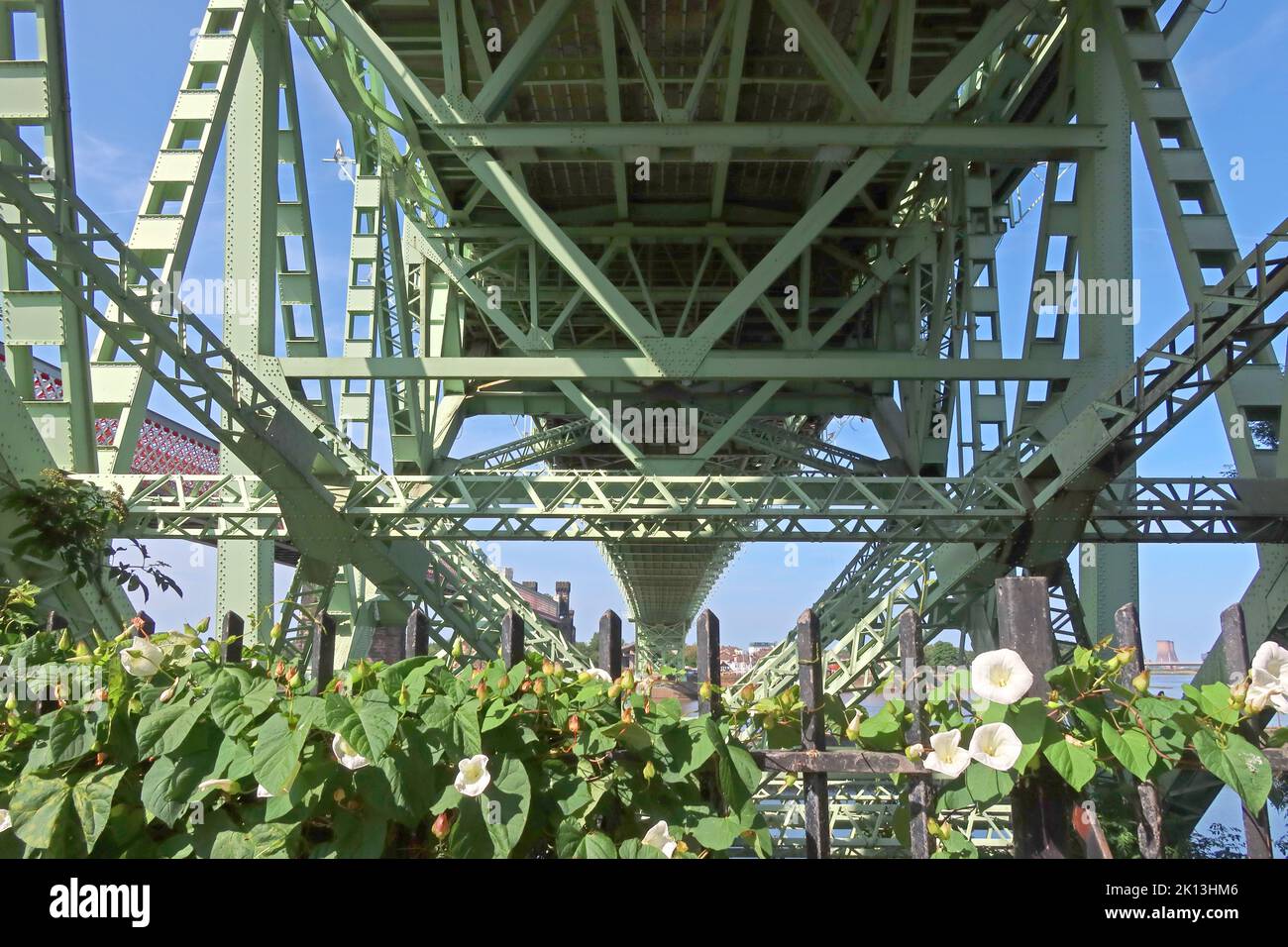Underside of Silver Jubilee A533 road Bridge (originally the Runcorn–Widnes Bridge), Halton, Cheshire, England,UK

Image details
Contributor:
Tony Smith / Alamy Stock PhotoImage ID:
2K13HM6File size:
57.1 MB (2.2 MB Compressed download)Releases:
Model - no | Property - noDo I need a release?Dimensions:
5472 x 3648 px | 46.3 x 30.9 cm | 18.2 x 12.2 inches | 300dpiDate taken:
16 July 2022Location:
Runcorn, Halton, Cheshire, England, UK,More information:
The Silver Jubilee Bridge (originally the Runcorn–Widnes Bridge or informally the Runcorn Bridge) crosses the River Mersey and the Manchester Ship Canal at Runcorn Gap between Runcorn and Widnes in Halton, England. It is a through arch bridge with a main arch span of 361 yards (330 m). It was opened in 1961 as a replacement for the Widnes-Runcorn Transporter Bridge. In 1975–77 the carriageway was widened, after which the bridge was given its official name in honour of the Queen's Silver Jubilee. It carries the A533 road and a cantilevered footway. design was for a steel through arch bridge with a 10-yard (9 m) single carriageway. The design of the bridge is similar to that of Sydney Harbour Bridge but differs from it in that the side spans are continuous with the main span rather than being separate from them. This design feature was necessary to avoid the problem of oscillation due to the railway bridge. The main span measures 361 yards (330 m) and each side span is 83 yards (76 m) Construction began on 25 April 1956. The contractors for the first phase of work, Leonard Fairclough of Adlington, cleared the ground and constructed the foundations for the piers. The contract for the second phase, the building of the main arch and the side arches, was given to Dorman Long of Middlesbrough who sub-contracted the building of the bridge deck, viaduct and roadworks to Leonard Fairclough. The carriageway was suspended from the arch by 48 lock-coil wire ropes.